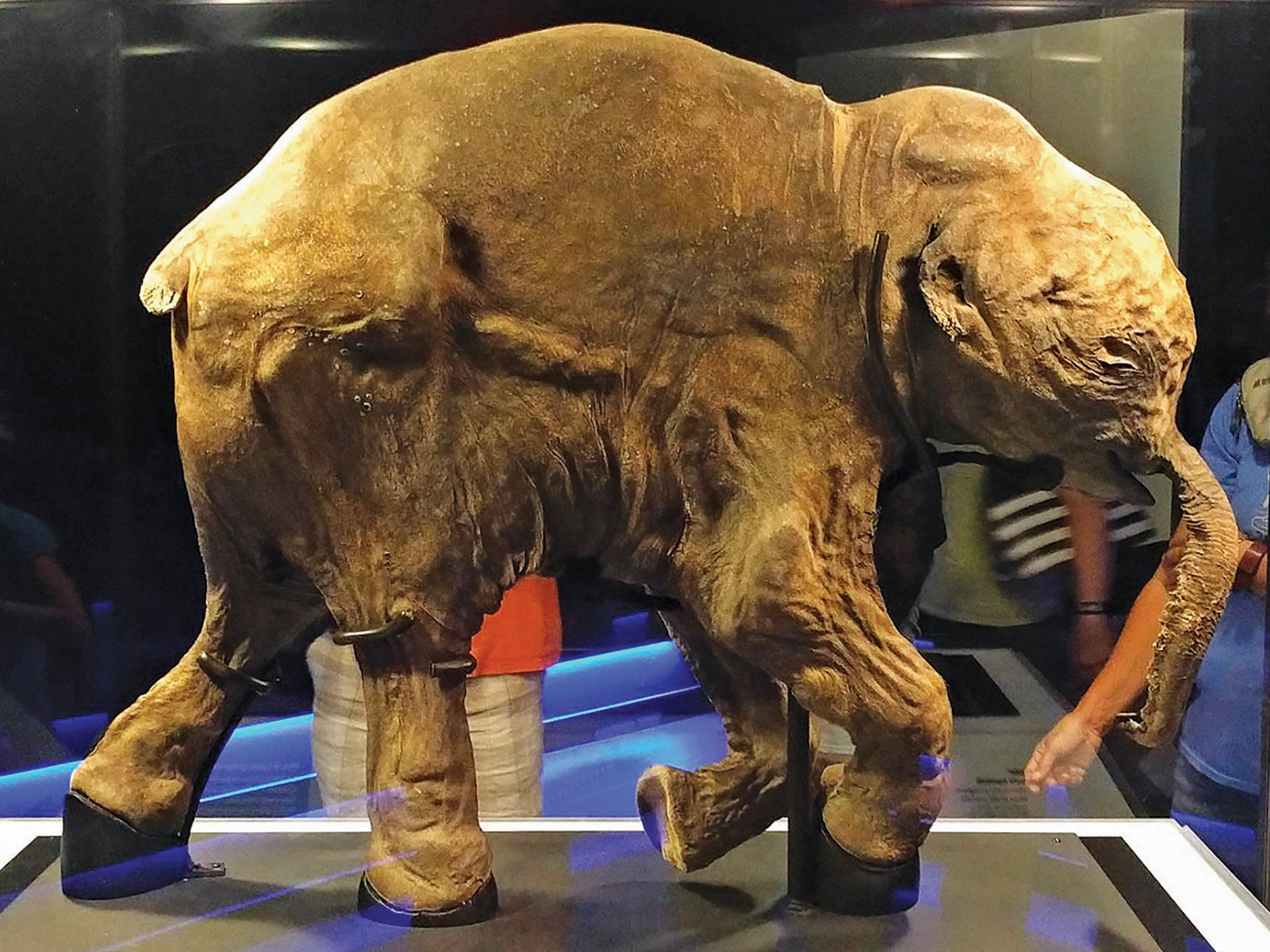Duck-billed dinosaurs have puzzled paleontologists for years, particularly because certain chambers in some of their skulls did not seem to have a clear purpose. But CT-scanning, originally designed for medical use, seems to support scientific speculation that the chambers played some role in communication between the animals.
Three-dimensional renderings of a Corythosaurus fossil revealed the shapes of inner skull cavities, including the ear, brain, nasal, and the mystery chambers, which are connected to the nasal passages and housed within oddly-shaped bony protrusions atop the dinosaur’s head.1
The scan results seem to confirm what one researcher, David Evans of the University of Toronto, has suspected for a long time: These strange chambers were used as sounding horns, “notably acoustic resonance for intraspecific communication.”2 “The CT scans documented a delicate inner ear that confirms that the dinosaurs could hear low-frequency calls produced by the crest,” according to a Ohio University press release.1
The study concludes that “computer models done by other researchers suggest that the crests could have been used to make low, eerie bellowing calls that could have been used in communication.”1 Creation biochemist Dr. Duane Gish advanced this possibility in his 1992 book Dinosaurs by Design: “The function of this hollow, skin-covered spike-like crest is uncertain, but perhaps it helped to amplify sound.”3
Following David Weishampel’s published analyses of vocal resonance chambers in lambeosaurine dinosaurs,4 one creation researcher suggested in 1991 a possible reason for the preponderance of the duck-billed dinosaurs in North America: “If Dr. Weishampel’s theory is correct with regard to the vocalizations of the crested hadrosaur, the sounds they produced may have been so irritating to the other animals that they were left quite to themselves.”5
In addition to the sound chambers, the CT scans of the Corythosaurus skull revealed “large…centers of the brain associated with higher cognitive functions.”1 The find surprised the researchers, since according to the evolutionary timeline, the dinosaurs lived when animals had not yet evolved complex brains that were capable of advanced functions. “But now we see that they had the brain power,” said Lawrence Witmer of Ohio University.1
Like all other fossils that have been discovered, the crested, duck-billed dinosaur demonstrates physiological features that are fully formed, with integrated skeletal, vocal, and nervous systems that apparently were fully functional. The combined communicative and cognitive capabilities suggested by this study do not reflect simple-to-complex evolutionary progression.
However, neither the sound chambers nor the large brain cavities that housed the appropriate auditory processors surprise scientists who employ the creation model, because it predicts the presence of coordinated elements like these, as well as the absence of transitional forms.
References
- Brain structure provides key to unraveling function of bizarre dinosaur crests. Ohio University press release, October 16, 2008. =
- Evans, D. C. 2006. Nasal cavity homologies and cranial crest function in lambeosaurine dinosaurs. Paleobiology. 32 (1): 109-125.
- Gish, D. 1992. Dinosaurs by Design. Green Forest, AR: Master Books, 39.
- Weishampel, D. B. 1981. Acoustic analyses of potential vocalization in lambeosaurine dinosaurs. Paleobiology. 7 (2): 252-261.
- Baker, M. 1991. Dinosaurs. Redding, CA: New Century Books, 95.
* Mr. Thomas is Science Writer.
Article posted on October 22, 2008.





















